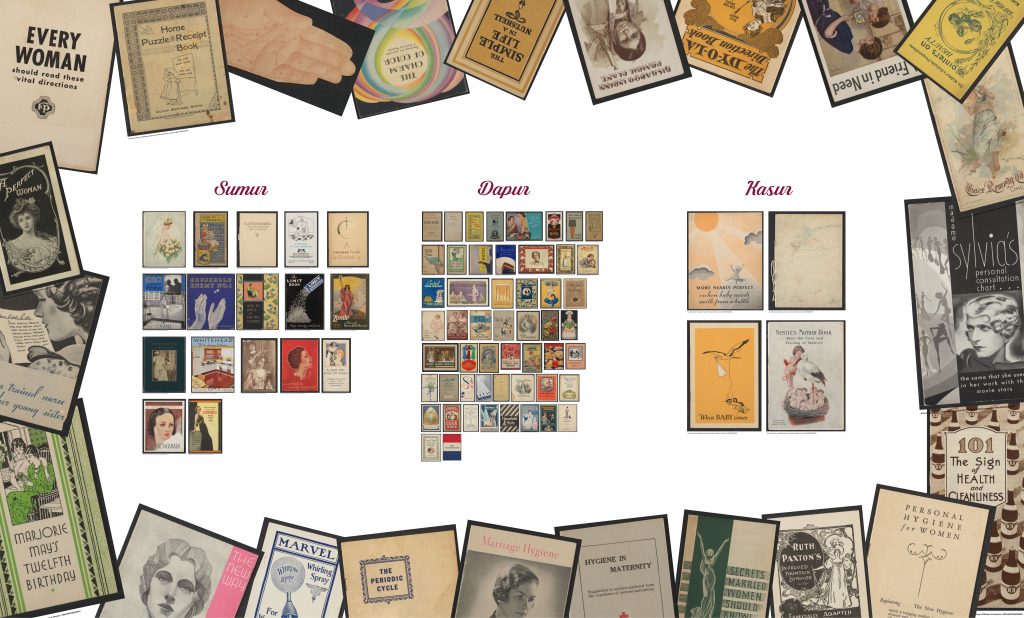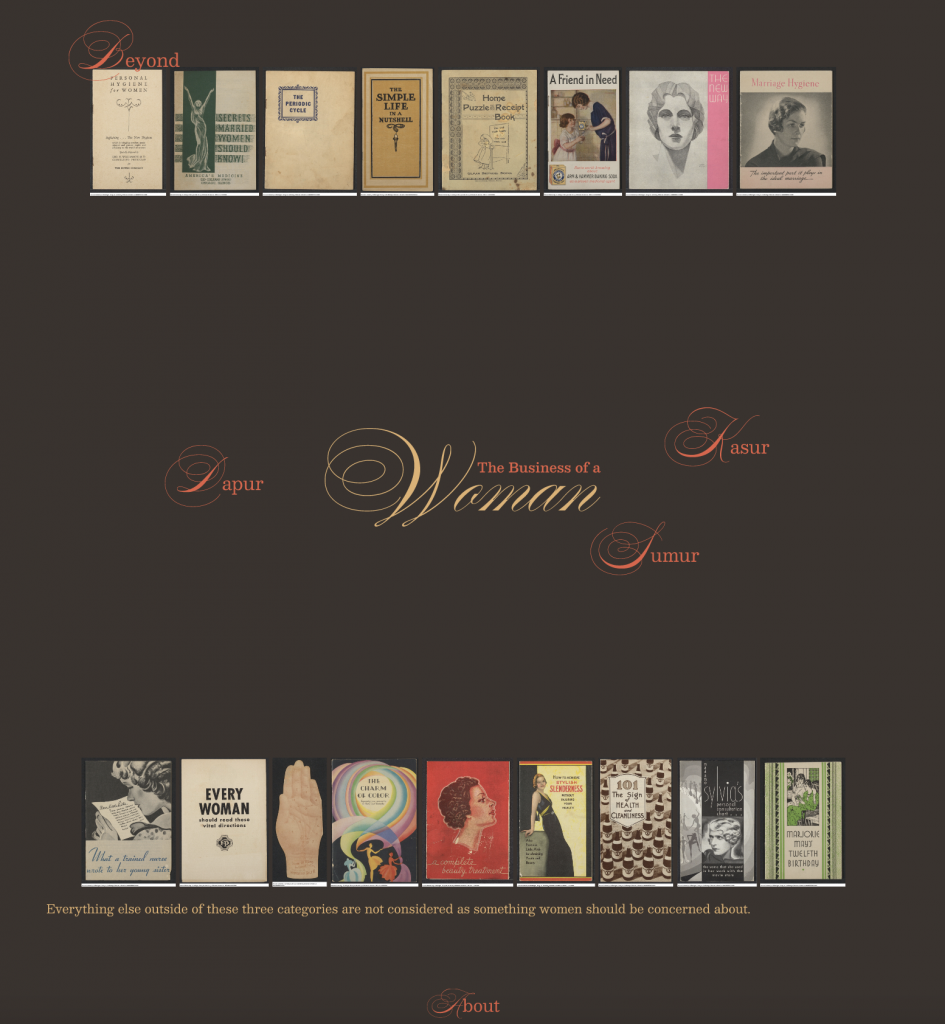It is always fascinating to see how women are portrayed in different cultures and media because most of the time we could see the idea of a perfect woman in the society that published the said media. Mainstream media has been something that women exist in a sort of two-dimensional nature, perpetuating the notion of how a woman is expected to be according to a patriarchal society. The expectation to serve the community they are in, especially the men and children, is prevalent in most cultures in the world.
Through the pamphlets in the set “What Women Wants to Know” we could explore the expectations of what are considered important to know as a woman in 19th and 20th century USA. The collection could be classified by topics, such as:
- Cooking
- Household Appliances
- Cleaning
- Health
- Beauty
The number of pamphlets in each category could be used as data to show what topics women are most interested in and what they want to know.

But it raises the question: who could determine what women actually want to know?
These categories are merely expectations of what women should want to know. In other words, these categories could be seen as what women should be; and what the sphere of being a woman encapsulates.
In terms of expectations, miles away from the USA, a phrase has risen in popularity in Indonesia since the 1920s about what a woman’s business should be.
Urusan perempuan itu dapur, kasur, sumur.
A woman’s business includes a kitchen, bed, and well.

This is of course, not at all politically correct. A woman could be anything, could do anything, and there is no such thing as gendered topics. It is also worth noting that the pamphlets outside of the three categories mostly cover topics like menstrual health, family health, and home DIY projects.
What this communicates to me is how the three categories are how a woman is expected to be of service to others—to their families and husbands—while everything outside is knowledge that doesn’t serve anyone else but women—as an individual and as a community.
I wanted to communicate how being a woman is not only about service; it’s not about being useful to others. Women are allowed to exist without the general population reaping benefits from them. The scale of being a woman is more than servitude; it is also serving yourself and your community of women.

To communicate this, I developed a website (prototype) that expands on the idea of being a woman. It’s like the scope of being a woman expands as you expand your perception of what is the business of women.
I call it the business of women, initially. But, I’m thinking of changing it into something else that could really drive the point home. Something to make the user think about how it is expected of women to be of service, but being a woman is more than being of service. I think the current title perpetuates the idea that the business of a woman is just the three categories, and that is not the point I want to make at all. In fact, I made it particularly to be able to have the three categories closed and only see the pamphlets that falls outside of the three categories to communicate the idea that even if you are not serving others, you are still a woman if you identify as a woman.

At the end of the day, being a woman is a multifaceted thing to be. A woman is a multifaceted being, after all. Should a woman take interest in something outside of sumur, dapur, and kasur, something that doesn’t serve anyone but herself, something beyond the patriarchal expectation of how a woman should be, she would still be a woman as long as she identifies as one.